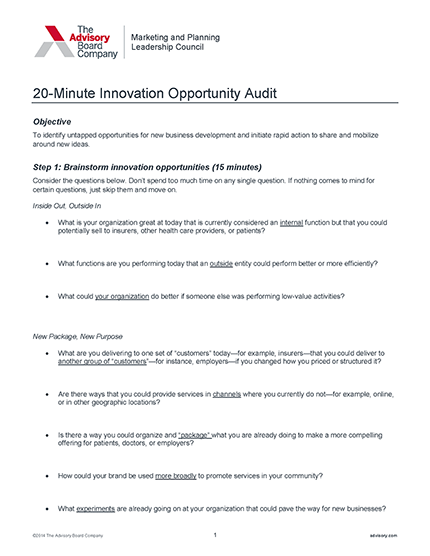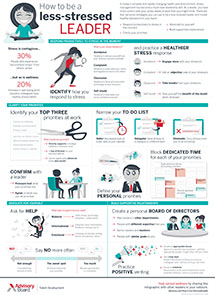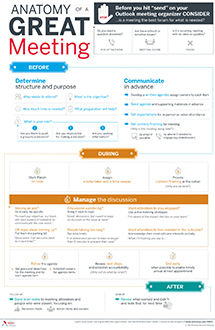Auto logout in seconds.
Continue LogoutEditor's note: This popular story from the Daily Briefing's archives was republished on Sept. 24, 2018.
When you're faced with a difficult problem, it's common to try and brainstorm potential answers, but writing for Harvard Business Review, Hal Gregersen—executive director of the MIT Leadership Center—argues you should brainstorm questions instead.
Questions, he writes, "often beget novel– even transformative–insights," and brainstorming questions rather than answers "makes it easier to push past cognitive biases and venture into uncharted territory."
Gregersen writes that he has spent years honing his so-called "question burst" brainstorming process and has broken it down into three main steps:
1. Select a challenge
The first step is to identify a problem you deeply care about and prepare a high-level overview that conveys the positive outcomes from solving the problem and briefly explains why you're stuck in a dilemma. This overview, should take no more than two minutes to deliver, Gregersen writes
Next, invite a group of people "who have no direct experience with the problem and whose cognitive style or worldview is starkly different from yours" to help you consider the challenge from different perspectives.
Before the brainstorming can begin, Gregersen says you should detail "two critical rules." First, only questions can be contributed. Second, questions cannot be framed with a justification or a preamble because doing so will "guide listeners to see the problem in a certain way—the very thing you're trying to avoid."
Gregersen also recommends doing an "emotion check" right away. Take a moment and reflect on how you're feeling about the challenge and write down a few words that describe your mood.
2. Start brainstorming
With a timer set to four minutes, the group should aim "to generate as many questions as possible," Gregersen writes. Quantity is key in this exercise, not quality. And as in all forms of brainstorming, Gregersen writes that there should be no pushback on any question that's offered—a rule that he acknowledges can be hard for leaders who are conditioned in the workplace to have ready answers.
After the timer goes off, Gregersen recommends another emotional check. Think about the challenge and how you feel about it now. If you're not feeling more positive about it than you were before, Gregersen recommends taking a break and maybe trying it again, or trying it another day, maybe with difference participants. He recommends completing "at least three rounds of the question burst exercise for a given issue."
3. Pick a solution and run with it
Once you have your questions, Gregersen recommends you sit down on your own and review them, looking for questions that "suggest new pathways" to solve your problem. "Select a few that intrigue you, strike you as different from how you've been going about things, or even cause you to feel a bit uncomfortable," Gregersen writes, noting that about 80% of the time you'll find at least one question that helps you reframe the problem in a new light.
Next, Gregersen recommends expanding on those questions by asking yourself why you chose them. "By better understanding why a question really matters and what obstacles you might face in addressing it, you deepen your resolve and ability to do something about it and further broaden the territory of possible solutions," Gregersen writes.
Finally, Gregersen writes, "commit to pursuing at least one new pathway you've glimpsed," and do it tenaciously.
The importance of facilitating questions
Question brainstorming is not something that comes naturally to most people, as they have "internalized the habit of not asking them—especially the tough ones," Gregersen writes.
To change this habit Gregersen writes that employees should feel "encouraged to value creative friction in everyday work." He adds, "People also become better questioners in organizational cultures where they feel safe doggedly pursuing the truth, no matter where it takes them." Gregersen cites MIT's Ed Schein, who said the key to creating such cultures is "humility, vulnerability, and trust" from leadership.
"When those conditions aren't present, questions tend to be constrained or, worse, crushed," Gregersen writes (Gregersen, Harvard Business Review, March-April 2018).
Our tips on how to have a thought-provoking meeting
There are about 11 million formal meetings in the United States every day—and more than half of them may be unproductive. Why? Because many meetings are inefficiently run. They don't set or achieve clear goals. And we hold them out of habit.
Drawing on best practices—as well as lessons from across our own organization—we've created this useful infographic to guide if you really need a meeting (and if so, how to maximize everyone's time).
Don't miss out on the latest Advisory Board insights
Create your free account to access 1 resource, including the latest research and webinars.
Want access without creating an account?
You have 1 free members-only resource remaining this month.
1 free members-only resources remaining
1 free members-only resources remaining
You've reached your limit of free insights
Become a member to access all of Advisory Board's resources, events, and experts
Never miss out on the latest innovative health care content tailored to you.
Benefits include:
You've reached your limit of free insights
Become a member to access all of Advisory Board's resources, events, and experts
Never miss out on the latest innovative health care content tailored to you.
Benefits include:
This content is available through your Curated Research partnership with Advisory Board. Click on ‘view this resource’ to read the full piece
Email ask@advisory.com to learn more
Click on ‘Become a Member’ to learn about the benefits of a Full-Access partnership with Advisory Board
Never miss out on the latest innovative health care content tailored to you.
Benefits Include:
This is for members only. Learn more.
Click on ‘Become a Member’ to learn about the benefits of a Full-Access partnership with Advisory Board
Never miss out on the latest innovative health care content tailored to you.



